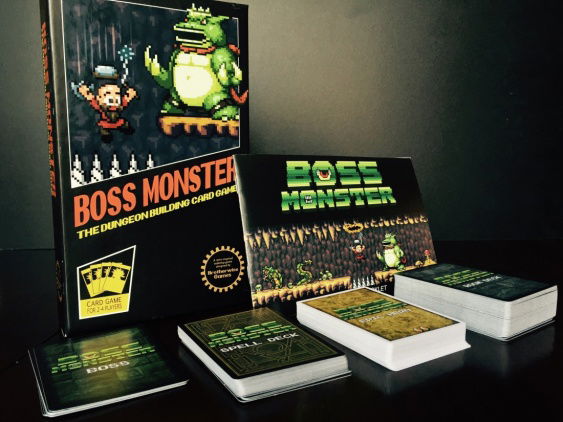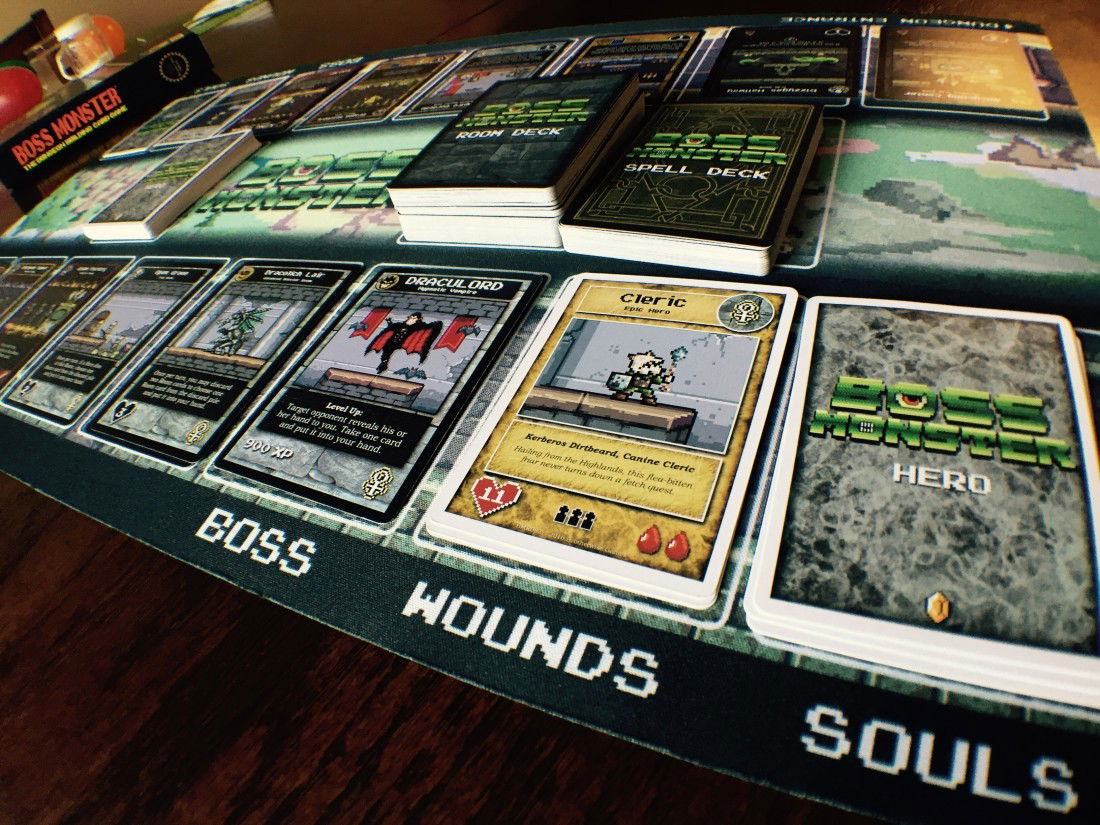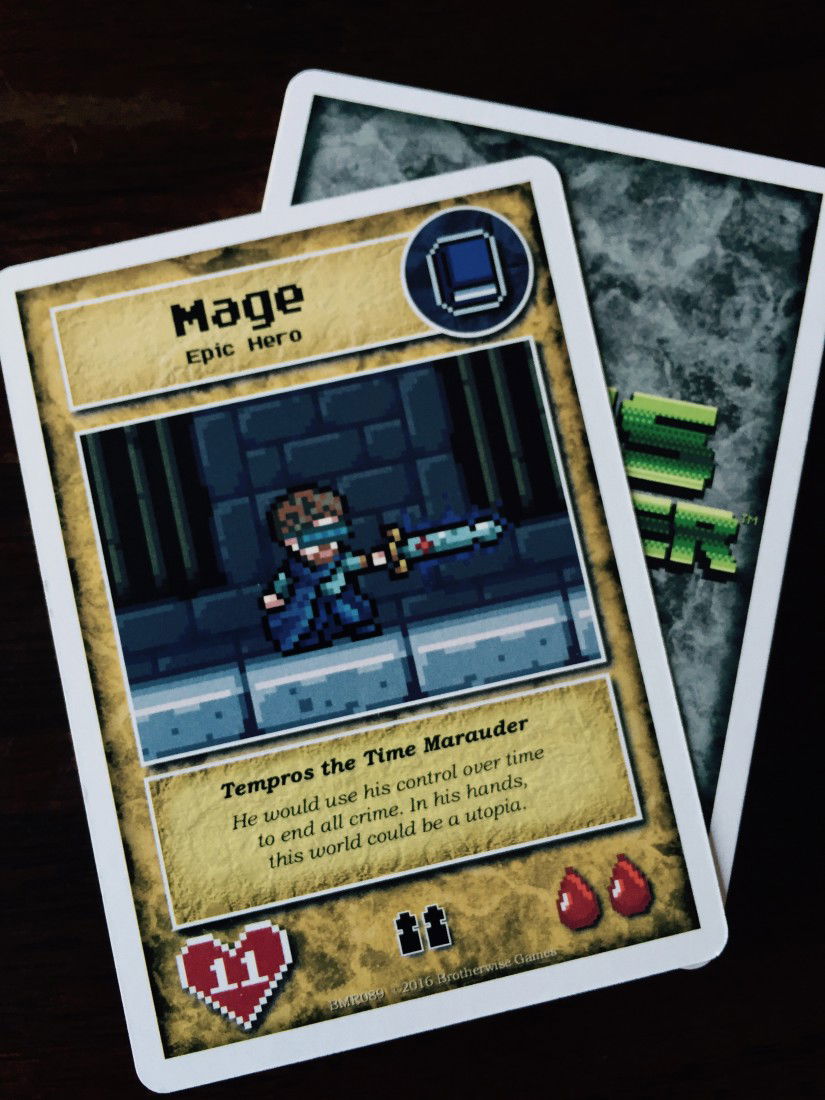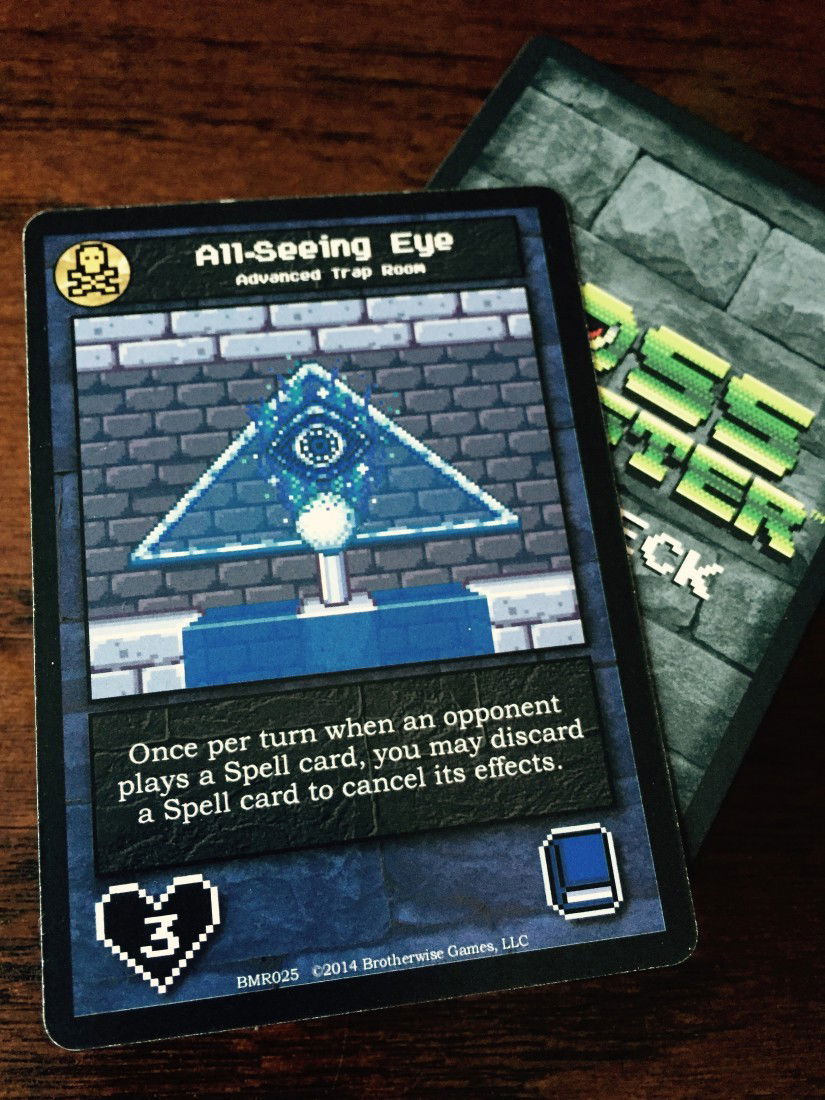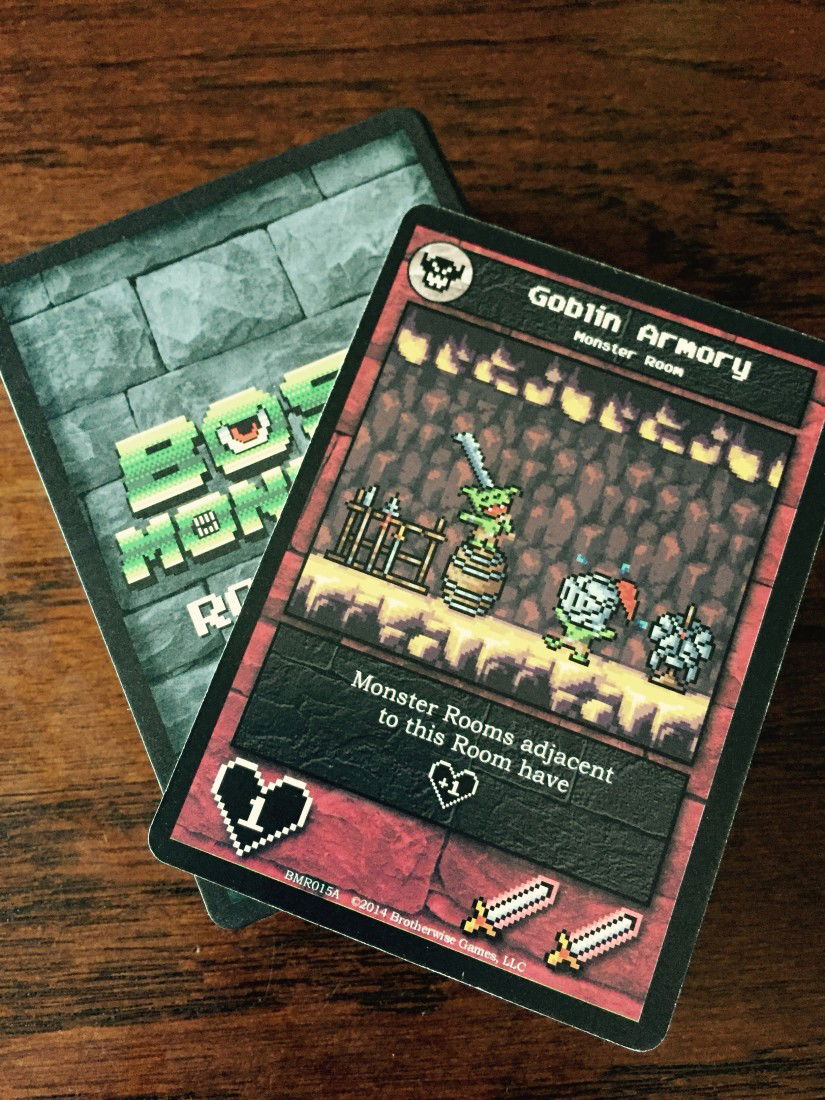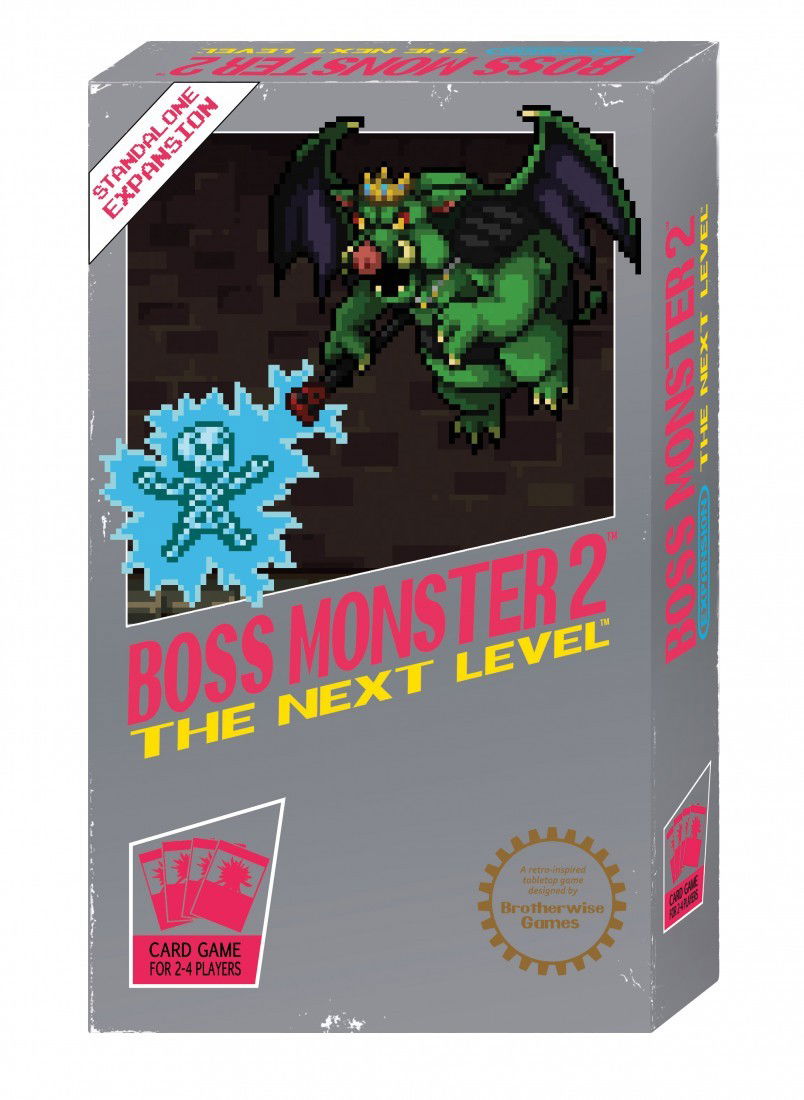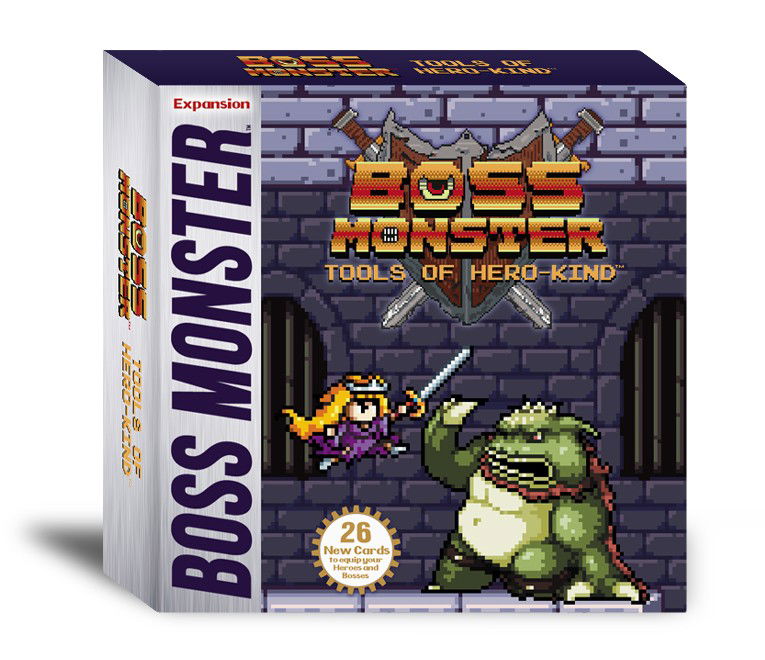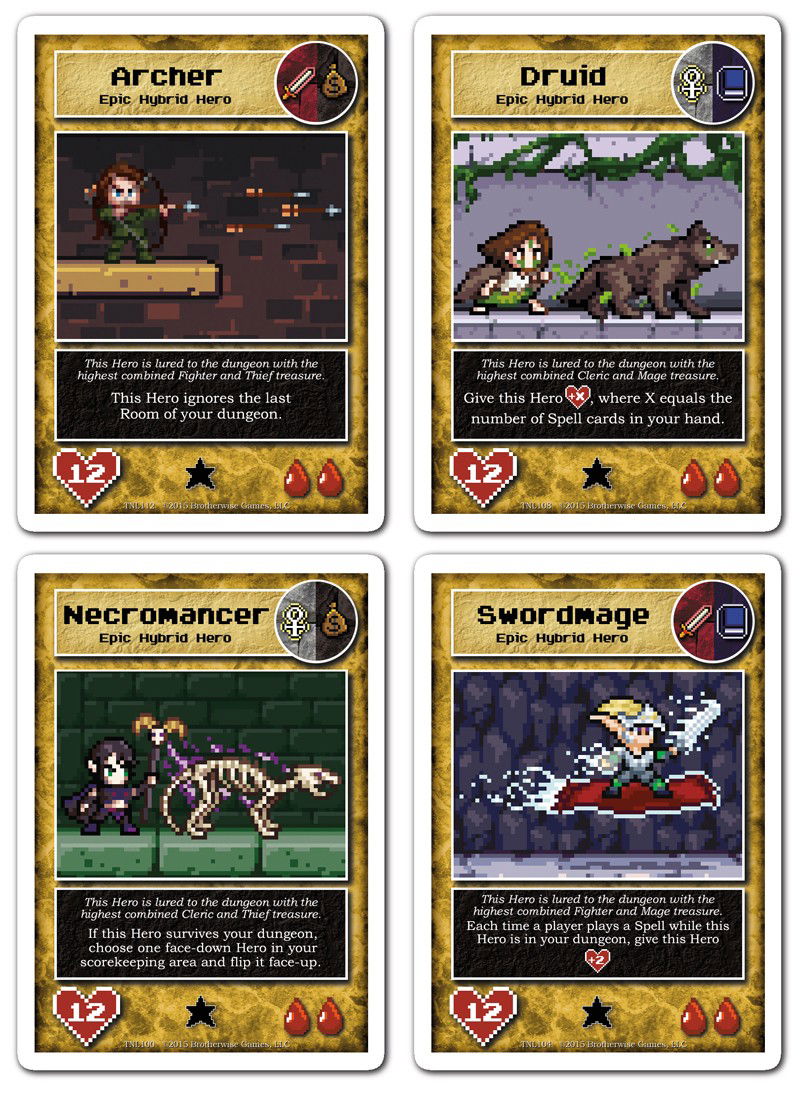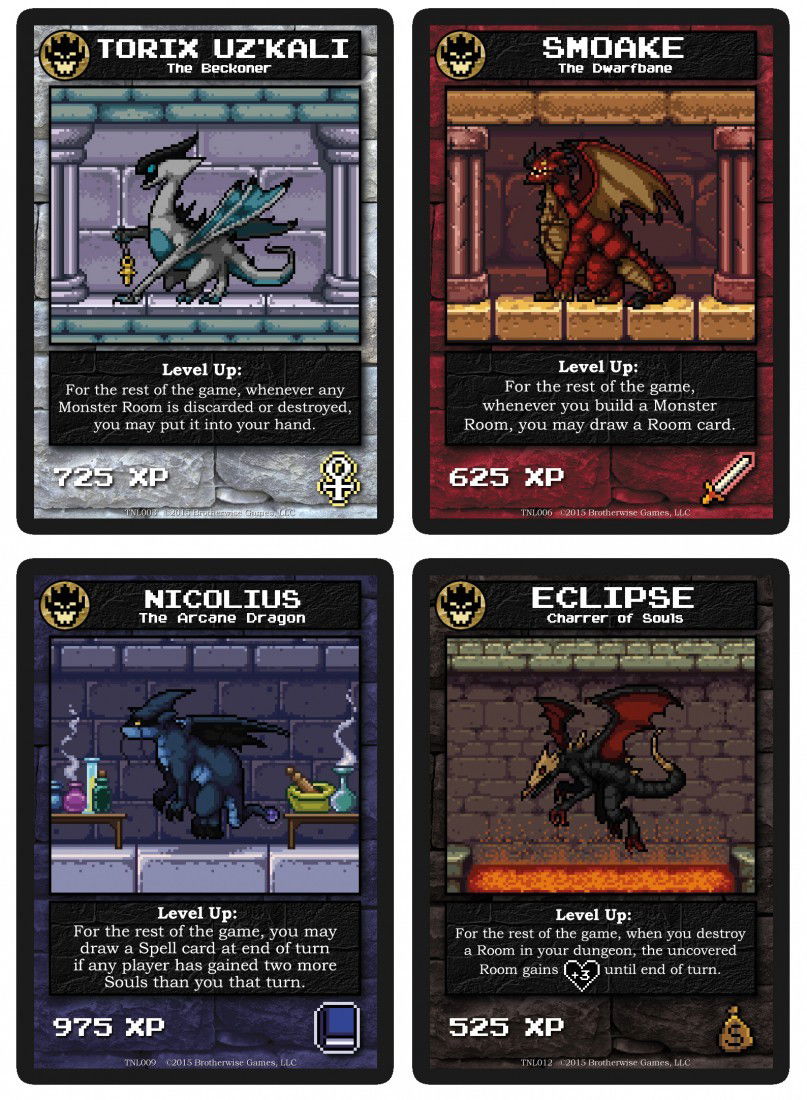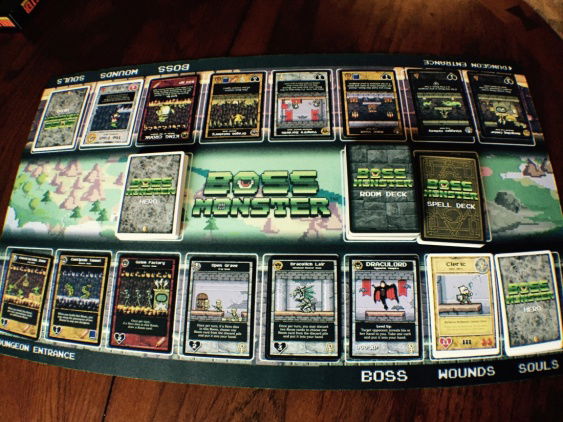Of all the tabletop games I’ve played in the past month (and I’ve sampled quite a few, thanks to Origins Game Fair), I’ve had the most fun with Boss Monster. Maybe it’s because of its throwback nostalgic pixel art, maybe it’s because its a game that’s easy to setup and jump into, or maybe it’s because of the way my friends and I roleplay during the entire game. Whatever the reason, trust me when I say that this game is great. If there is one single TTG that has been produced in the past few years that speaks to the retro game generation more than Boss Monster, I’d love to see it.
Title: Boss Monster
Creator: Brotherwise Games
Type: Table Top Card Game
Price: $24.95
How does it Play?
A lot of tabletop games require some time set aside up front for setting up the game and explaining the rules. Not Boss Monster, and that’s great. The setup is very quick (especially if you have the gorgeous playmat which designates areas for the different decks), and the rules are almost self-explanatory. It’s one of those games where you don’t need to explain things to new players beforehand, but instead, can jump into a game and they’ll all understand by the end of the first round.
To begin, each player gets a random boss card to be the designated ‘Boss Monster’ of their respective dungeons. Then, each player gets dealt some room cards and spell cards. Room cards are placed to the left of the boss and represent the separate ‘rooms’ of the dungeon (I’ll explain spell cards in a moment), and each room contains a specific type of treasure and amount of damage it will deal to an adventurer.
During each turn, heroes are drawn from the Hero Deck and placed in “town” face-up for all to see while players decide which room they would like to build (if any) in their dungeon, and lay their new room face-down, hidden from all other players. Heroes come in four types, and this can be determined by the symbol at the top right of the hero card – a blue tome for Mages, a red sword for Fighters, a yellow holy relic for Clerics, and a money bag for Thieves. These same symbols are found at the bottom of every room card in players’ dungeons and indicate what type of treasure lies in that room.
Players then decide to “build” their rooms and reveal the new room they have chosen to add to the dungeon. Now begins the “bait phase,” in which heroes are lured to the dungeons with the highest number of specific treasure they seek. For instance, lets say one of the two heroes in town is a Mage, who always seeks blue tomes. All players would count the number of blue tomes across all rooms of their dungeon, and the player with the highest amount of blue tomes lures the hero to their dungeon. If there is a tie for a number of blue tomes, the hero stays in town until eventually being lured.
When a hero is lured to a player’s dungeon, the hero card is placed at the dungeon entrance, which is to the left of the left-most dungeon room. The adventurer then makes their way through each room. Heroes have a set amount of health, and rooms deal a set amount of damage. As the hero moves from room to room, the player subtracts the room damage from the hero’s total health, and if the hero loses all health before reaching the boss, they die and the boss collects a soul. If the hero should survive, a wound is inflicted upon the boss. Get five wounds and you’re out of the game, get ten souls and you win. Simple.
Boss Monster Setup using the Playmat
Presentation
The first thing to notice about Boss Monster is the art style, and it’s probably one of the game’s greatest strengths, both in terms of aesthetic and marketing. The pixel skills shine across every card included in this game. Most of the cards you see will be the room cards and hero cards because you’ll spend more turns building rooms and killing heroes than anything else, and every one of them is a piece of eye candy. I say that the art is one off the game’s greatest strengths because for anyone who grew up playing video games, Boss Monster taps into that nostalgia real hard. The blending of table top and video games also makes this game a perfect entry point into TTGs for the average video gamer looking to break in.
Don’t mistake it simply for an easy way to sell the game, though, because no other art style would fit. Yes, the pixel art does help allude to the retro game genre that the game is placing itself in, resembling early side-scrolling NES or SNES titles, but Boss Monster is also supposed to be a game that you can enjoy some laughs with, so a realistic art style similar to Magic: The Gathering would be too serious and unfitting. Part of what makes Boss Monster fun is that it doesn’t just honor the 8-bit genre, it sometimes mocks it.
This is evident not only in the scenes on the room cards, but in the hero cards as well. Each hero has a small description under it explaining their motivations and background, and they are often hilarious in the way they poke fun at the fantasy/dungeon crawling genre. Also, these descriptions are the players’ only peek into the lore of the world Boss Monster is creating. You could easily ignore these morsels of info, but they’re so tasty that I encourage players to read them aloud before the hero makes his way into the dungeon.
If you really want to stretch the game out and get the most out of the experience, you can do what my friends and I do, which is give detailed accounts of the hero’s progression through the dungeon. It’s easy enough just to subtract the room damage from the hero’s health, but what exactly happened? If a Fighter stumbled into the “Goblin Armory” and received 1 damage, perhaps it was because he cut his arm on a shelved spear trying to escape. If a Mage found herself trapped in the room with the “All-Seeing Eye,” maybe the eye peered inter her soul so hard that when faced with the truth of her past, the mage’s mind shattered, dealing 3 damage. It’s up to you!
Summary
This game is great. Whether you want to just play a quick few rounds, or decide to dive further in and read all of the hero’s lore, you’re still getting a fun game that’s quick and painless. No 20 page rulebook to learn, no arguments over what players can and cannot do – just an amazing game with great art that speaks to the retro game generation.
Pros
- Easy to set up and learn
- Perfect gateway into table tops for video gamers
- Amazing pixel art
- Highly Replayable
Cons
- Not everyone loves retro-themed games, so this might not ring the same bells for them
-
Boss Monster strikes the retro nostalgia nerve in all the right ways.


